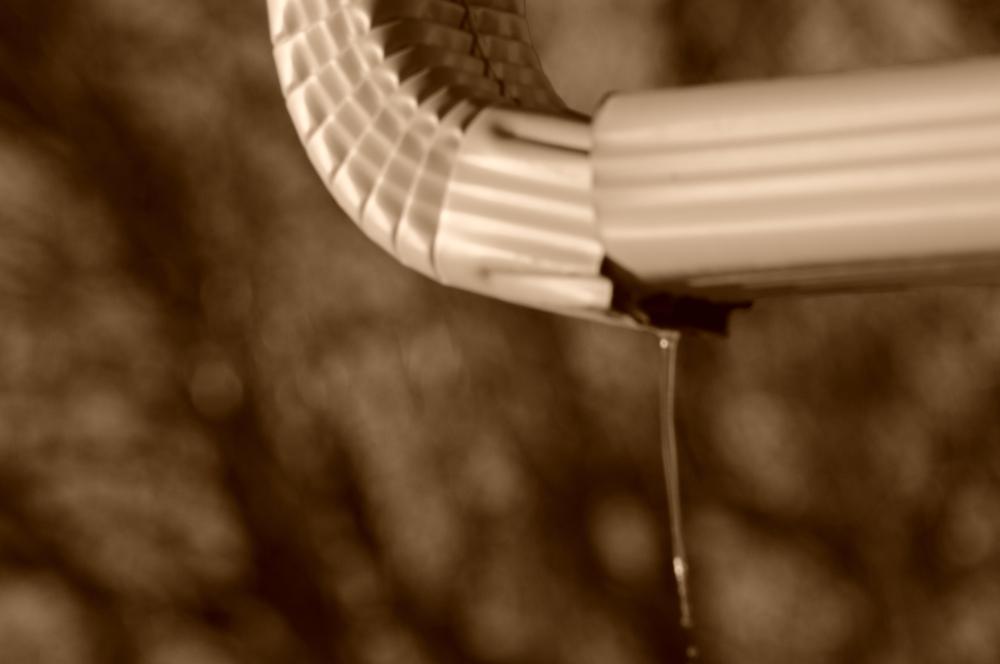
Your home’s gutters are like the unsung heroes of its structural integrity. They play a critical role in channeling water away from your home, protecting the roof, siding, and foundation from water damage. But what happens when these crucial components of your home’s defense system start to show signs of failure, such as dripping? In this comprehensive guide, we will explore the myriad reasons why gutters can start to drip and provide you with a range of solutions to keep these leaks at bay.
Understanding the Importance of a Properly Functioning Gutter System
Before we can diagnose why your gutters might be dripping, it’s crucial to appreciate the essential function they serve. Effective gutters:
- Prevent water damage to your home’s exterior, foundation, and landscaping
- Reduce the likelihood of basement flooding
- Minimize soil erosion around your property
- Deter mold and mildew growth
- Help maintain the structural integrity of your house by managing water runoff
A proper gutter system is a multitasking asset that’s often taken for granted until it malfunctions. Understanding its pivotal role underscores why addressing gutter drips promptly is imperative.
Common Reasons for Gutter Drips
Gutter leaks can be attributed to various factors, ranging from the type of material used to the installation process. Below are the most common reasons why your gutters might be dripping.
Faulty Seams and Joints
One of the leading culprits for gutter drips is poorly sealed seams and joints. Over time, the caulking or sealing material that keeps these parts of the gutter system together can degrade, leading to leaks.
Rust and Corrosion
In regions where there’s high humidity or a lot of rain, rust can eat away at metal gutters, causing holes and cracks that allow water to escape.
Clogs and Blockages
Debris such as leaves, twigs, and even small animal nests can accumulate in your gutters. When water tries to pass through these blockages, it can overflow or seep through gaps, causing drips.
Incorrect Pitch
Gutters are supposed to have a slight pitch toward the downspouts to facilitate water flow. If they are sloped incorrectly or have shifted over time, this can lead to standing water and eventual leaks.
Improper Installation
If gutters were not installed correctly in the first place, they may not be able to handle the volume of water they’re designed for, leading to overflows and drips.
Age and Wear
Like any part of your home, gutters have a lifespan. As they age, they become more susceptible to issues such as sagging, which leads to water not being channeled effectively.
The Effect of Weather on Gutter Drips
Weather elements play a significant role in the deterioration of gutters. Harsh conditions such as heavy rain, strong winds, hail, and snow can physically damage them and their capacity to manage water flow. Extreme temperature changes can also cause expansion and contraction, further weakening the structure.
Signs of Gutter Leaks
Spotting the signs of a leaking gutter early can save you from substantial damage and repair costs. Look out for these indicators:
- Water marks on the siding
- Pools of water along the foundation
- Damp walls and ceilings inside your home
- Peeling paint or rust spots on the gutters themselves
- Eroded landscape elements, such as flower beds or walkways
Solutions for Gutter Leaks
Once you’ve detected a leak, addressing it promptly can prevent further problems. Here are several strategies to fix your gutters and prevent more leaks in the future.
Repairing Seams and Joints
Inspect the seams and joints for signs of wear. If you notice any gaps or missing sealant, reapply a waterproof caulk to create a tight seal.
Dealing with Rust and Corrosion
For minor rust spots, scrub the area with a wire brush, then apply a rust converter and a coat of exterior primer. For more extensive corrosion, it might be time for a replacement or an upgrade to more resistant materials.
Regular Cleaning
To avoid clogs, make a habit of cleaning your gutters at least twice a year, more often if you have overhanging trees. Don’t forget to remove debris from the downspouts as well.
Correcting the Pitch
If you notice that your gutters aren’t sloping correctly, readjust them or have a professional do so. Ensuring the right pitch will help water to flow freely and prevent standing water that can lead to leaks.
Reinstallation
If you suspect that your gutters were installed poorly, it may be necessary to reinstall them. This ensures that they function as intended and can handle the expected volume of water.
Replacement
For gutters that are too damaged or too old to be repaired effectively, a full replacement may be the best course of action. Upgrading to more durable materials can also be a preventive measure against future leaks.
Maintenance Tips to Prevent Gutter Leaks
Prevention is always better than a cure, especially when dealing with your home’s gutter system. Here are some simple maintenance tips that can help keep your gutters drip-free:
- Routinely clear out debris
- Ensure all fastenings are secure
- Trim overhanging branches
- Regularly inspect for damage and early signs of leaks
- Consider installing gutter guards to minimize debris buildup
By staying proactive with your gutter maintenance, you can spot and fix potential issues long before they turn into significant leaks.
Protecting Your Home Against Water Damage
Gutter drips are more than a nuisance; they’re an indication of a potential failure in your home’s protective shield against water damage. Addressing the root causes of these leaks promptly and maintaining your gutter system can save you time, money, and stress in the long run. Whether it’s through simple, regular cleaning or more significant repairs and replacements, investing in your gutters is an investment in the longevity and safety of your home.
Remember to be vigilant, act promptly, and don’t hesitate to seek professional advice when necessary. With careful attention and proactive measures, you can keep those gutters in tip-top shape – and keep the drips at bay.

